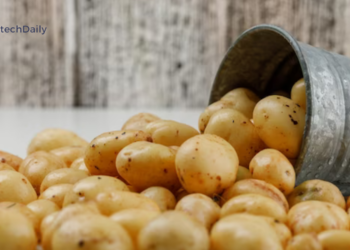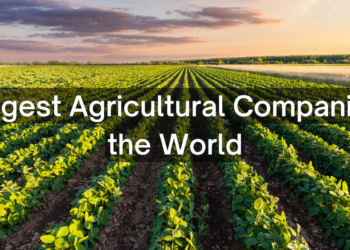In a rapidly urbanizing world, the traditional paradigm of agriculture faces increasing challenges. The global population is on an upward trajectory, and by 2050, it’s projected that nearly 70% of the world’s population will reside in urban areas. With such a significant shift, the demands on our food production systems are escalating, creating a pressing need for innovative and sustainable solutions. One such solution that has garnered significant attention and momentum in recent years is vertical farming.
Vertical farming is, in essence, a groundbreaking agricultural practice that represents a fundamental departure from traditional farming methods. It involves the cultivation of crops within vertically inclined surfaces, often stacked in layers, and predominantly within urban environments. This paradigm shift in agriculture is born out of the need to address the challenges posed by rapid urbanization, resource scarcity, and the imperative to reduce the environmental footprint of food production.
In this article, we will delve into the world of vertical farming, exploring the myriad advantages and unique challenges this approach brings.
What is vertical farming?
Vertical farming is an innovative agricultural practice that represents a significant departure from traditional farming methods. In vertical farming, crops are cultivated in stacked layers or vertically inclined surfaces, primarily within urban environments. This approach utilizes advanced technologies such as hydroponics and aeroponics, which allow crops to thrive in controlled environments without soil. Artificial lighting, temperature control, and precise nutrient delivery ensure optimal growing conditions year-round.
One of the defining characteristics of vertical farming is its ability to maximize the use of space. By growing crops vertically, it minimizes land requirements, making it feasible to cultivate food in densely populated urban areas. Additionally, vertical farming can significantly reduce water consumption compared to conventional agriculture and minimize the need for pesticides and herbicides. This sustainable farming method is seen as a promising solution to meet the rising global demand for fresh produce while mitigating the environmental impacts of traditional farming.

The controlled environment allows for precise management of temperature, humidity, and other growing conditions, resulting in faster plant growth and higher yields. There are several different methods of vertical farming, including tower farms, greenhouse farms, and container farms.
Types of crops grown in vertical farms:
Vertical farms are versatile and capable of cultivating a wide variety of crops. The choice of crops depends on factors such as the farm’s location, the technology used, and market demand. Here are some common types of crops grown in vertical farms:
- Leafy Greens: Leafy greens like lettuce, spinach, kale, and arugula are among the most popular crops in vertical farms. These fast-growing plants thrive in controlled environments and are well-suited to vertical farming systems.
- Herbs: Culinary herbs such as basil, mint, parsley, and cilantro are commonly grown in vertical farms. They are in high demand for their culinary uses and can be cultivated year-round.
- Microgreens: Microgreens, like micro basil, radish, and sunflower shoots, are tiny, nutrient-dense versions of their mature counterparts. They are popular in upscale restaurants and for gourmet cooking.
- Tomatoes: Some vertical farms are equipped with advanced systems to support the growth of vine crops like tomatoes. Compact, determinate tomato varieties are often chosen for vertical farming.
- Peppers: Bell peppers and chili peppers are grown in some vertical farms. Their vertical structure makes them suitable for multi-level growing systems.
- Strawberries: Compact strawberry varieties are well-suited for vertical farming. These sweet, red berries can be grown in vertical planters, towers, or wall-mounted systems.
- Cucumbers: Miniature cucumber varieties are chosen for vertical farming setups. These crops require trellising for support as they grow.
- Beans: Some vertical farms experiment with bush bean varieties, though these plants may require additional support structures.
- Bok Choy and Pak Choi: These Asian greens are suitable for vertical farming and are commonly grown in hydroponic or aeroponic systems.
- Edible Flowers: Certain varieties of edible flowers like nasturtium, marigold, and viola are grown for culinary purposes in vertical farms.
- Fruit Trees: In larger vertical farms, dwarf fruit trees such as dwarf apple or pear trees are cultivated in specialized systems that accommodate their growth.
- Mushrooms: While not technically plants, various types of mushrooms, like oyster, shiitake, and maitake, can be grown vertically in a controlled environment.
- Green Onions and Scallions: These versatile ingredients are frequently grown in vertical systems because of their relatively quick growth cycle.
- Cherry and Grape Tomatoes: Compact tomato varieties like cherry and grape tomatoes are well-suited for vertical farming systems.
The selection of crops may vary depending on local demand, climate, and the specific goals of the vertical farm. Advances in technology continue to expand the range of crops that can be successfully grown in vertical farming systems, making this method a promising solution for sustainable urban agriculture.
Advantages of vertical farming:
Vertical farming has several advantages over traditional farming methods.

- Increased Crop Yield: Vertical farming allows for year-round cultivation and multiple harvests annually, resulting in significantly higher crop yields.
- Reduced Land Use: Vertical farms require much less land than traditional farms, making it an ideal solution for urban environments with limited space.
- Water Efficiency: Controlled systems in vertical farming use water efficiently, reducing overall consumption compared to traditional methods.
- Fresh, Local Produce: Vertical farms can be situated close to urban centers, providing fresh, locally grown produce, which reduces the carbon footprint associated with transportation.
- Pesticide-Free Cultivation: Controlled environments minimize the need for pesticides and herbicides, promoting healthier, more sustainable farming practices.
Challenges of vertical farming:
Despite its many advantages, vertical farming also faces several challenges.

- High Initial Capital Costs: The setup of vertical farming systems can be costly due to the need for specialized equipment and infrastructure.
- Energy Consumption: Artificial lighting, climate control, and nutrient delivery systems can result in high energy consumption, impacting both operational costs and environmental sustainability.
- Technological Complexity: Vertical farming requires a deep understanding of technology and plant biology, which may present a steep learning curve for newcomers.
- Limited Crop Variety: Not all crops are suitable for vertical farming, and the focus is often on leafy greens and herbs rather than staple food crops like grains.
- Sustainability Concerns: Ensuring the sustainability of vertical farming, particularly in terms of energy efficiency and resource use, remains an ongoing challenge.
Vertical farming in urban environments:
One of the most exciting applications of vertical farming is in urban environments, where space for traditional farming is limited. Vertical farms can be set up in abandoned warehouses, parking garages, or even in the basements of office buildings.
This allows for fresh produce to be grown locally and sold directly to consumers, reducing the carbon footprint of food transportation and increasing food security in urban areas.
Another advantage of vertical farming in urban environments is that it can help address the issue of food deserts, which are areas with limited access to fresh, healthy food. By bringing fresh produce directly to urban neighborhoods, vertical farming can improve the health and well-being of residents and reduce the incidence of diet-related illnesses such as obesity and diabetes.
Vertical farming in practice:
Several companies and organizations around the world are already using vertical farming to grow crops in urban environments. One such company is AeroFarms, based in Newark, New Jersey, which operates one of the largest indoor vertical farms in the world.
The company uses aeroponic technology to grow leafy greens and herbs in a controlled environment, using up to 95% less water than traditional farming methods. Another company, Plenty, based in San Francisco, California, use vertical farming to grow a variety of crops, including leafy greens, strawberries, and tomatoes, using a proprietary technology that maximizes yields and reduces energy consumption.
The company provides fresh produce to local markets and has helped reduce the country’s reliance on imported food. In Kenya, the company iGrow uses hydroponics to grow crops such as tomatoes and cucumbers on a vertical farm, providing fresh produce to local markets and creating jobs for local farmers.
Conclusion
Vertical farming has emerged as a promising solution to some of the most pressing challenges in agriculture today. It addresses the need to produce more food with less land, resources, and environmental impact, while also mitigating the issues associated with food security in urban areas. Though challenges such as initial investment costs and energy consumption exist, ongoing technological advancements and increasing awareness of the importance of sustainable agriculture are propelling vertical farming into a crucial role in the future of food production.
As our cities continue to grow, it may be the key to providing fresh, locally grown produce to urban populations and reducing the strain on our planet’s resources. This remarkable agricultural innovation stands at the forefront of addressing the challenges of modern urban life while embracing the opportunities that technology provides.









